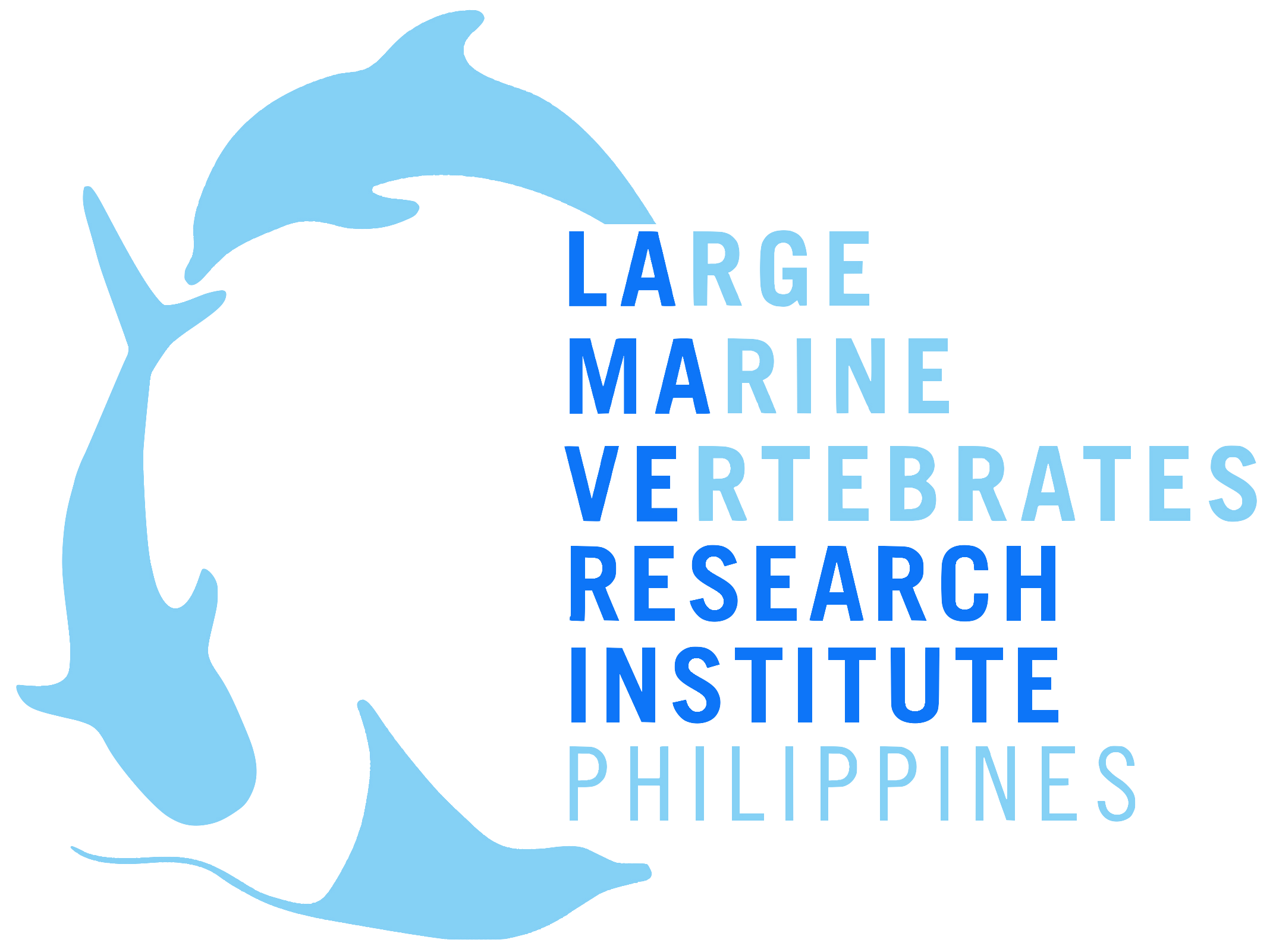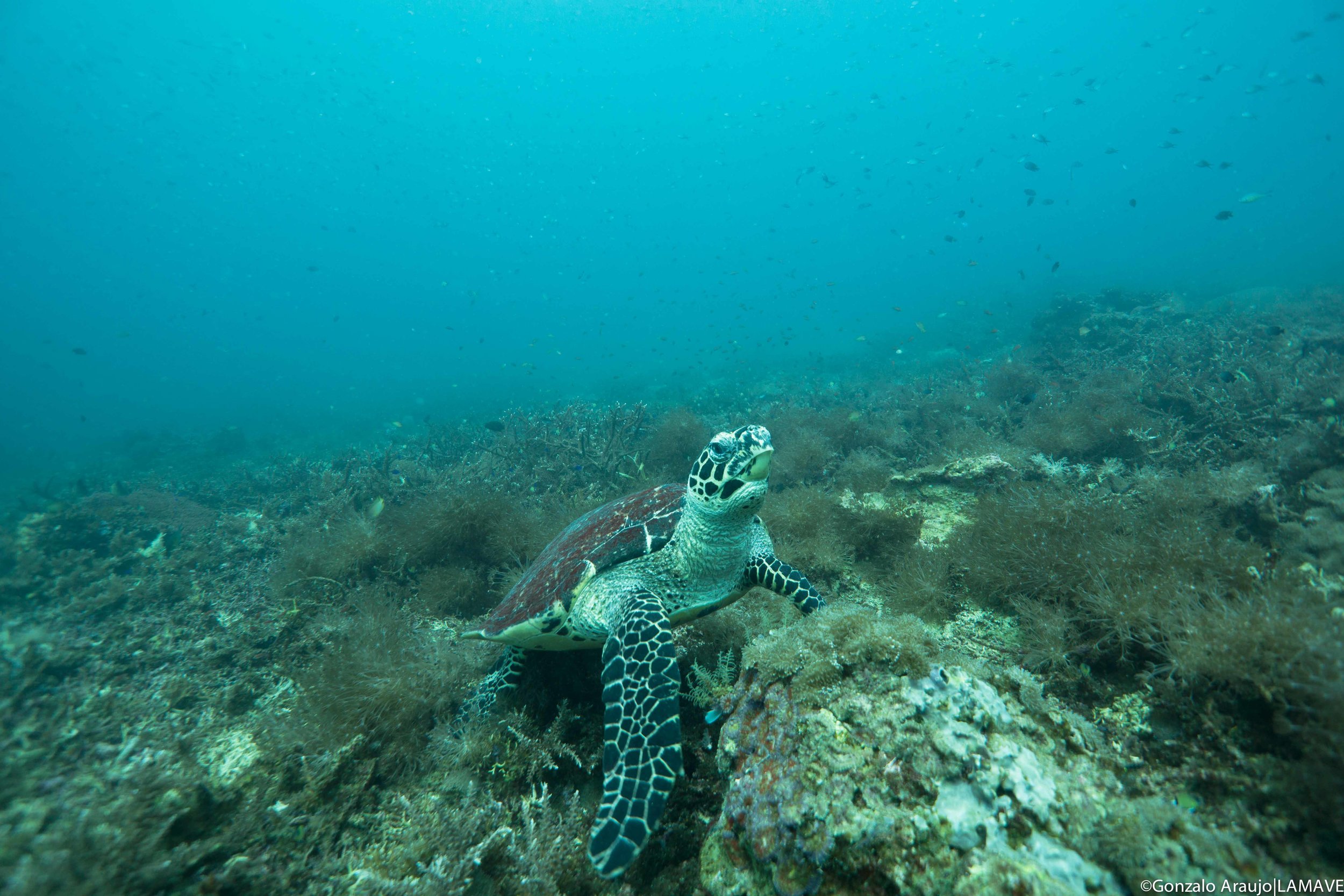NEWS
LAMAVE and the Philippine Siren team up again for an expedition of diving and whale sharks!
By Gonzalo Araujo
This January we teamed up for a second time with Worldwide Dive and Sail to bring an exclusive trip around the Visayas, Philippines. This trip was designed to visit Large Marine Vertebrates Research Institute Philippines (LAMAVE) project site in Sogod Bay, Southern Leyte, and potential study sites for marine megafauna.
We boarded the M/Y Philippine Siren in Mactan Cebu with a lot of happy divers. The excitement and expectation could be felt before I boarded the boat. The crew, led by captain Russell and cruise director Jona, with open arms and smiles as always. It’s always a good feeling boarding this vessel.
The Philippine Siren.
The trip started in the Camotes Islands, north of Bohol, in the central Visayas. We then cruised east to Padre Burgos in Southern Leyte where we did a drift dive (highlight: wonderpus) and moved to the eastern side of Sogod Bay as the wind was too strong to stay exposed in that area. Next we dived the jewel of Sogod Bay Napantao. Napantao is a marine protected area established in 1996. It boasts an enormous amount of fish, coral and invertebrate diversity. It’s been a popular diving destination for decades, and we could not miss it! We did multiple dives there, highlights being: hunting giant trevally, whitetip reef sharks and the abundance of fish!
Abundance of fish in Napantao Marine Protected Area, Sogod Bay.
Whilst in Sogod Bay we visited Pintuyan Bay, which hosts a small scale whale shark ecotourism operation from the village of Son-ok since 2006. Over a whale shark biology and ecology talk prior to our whale shark interaction, we were interrupted by a pod of spinner dolphins (Stenella longirostris), an abundant species in this part of the country.
The whale shark watching experience in Son-ok is a community-run operation conducted by a local people’s organisation called KASAKA. The wives of the guides and spotters have exquisitely iconised hand-sewn toys with the help of Conservation Sew Mates which they sell to tourists. Whilst the spotters searched for the world’s largest fish, the guests bought a fair amount of hand-sewn whale sharks. We were however unsuccessful finding the spotty giants. Luckily, knowing the area and with intel from our field team we had a plan B for such occasion.
Hand-sewn whale sharks by the Seabreeze womens association.
Sogod Bay, Southern Leyte from the sky.
LAMAVE has been studying whale sharks in Southern Leyte since 2013. Whale sharks are highly mobile and move >10,000 km a year. Most of the whale sharks we see in the central part of the Philippines are juveniles and most of their movements are triggered by food. This year the whale sharks were hanging out in Lilo-an, 40 km north of Pintuyan. So after diving Son-ok point, Dan-an and Caubang night dive (highlights: bobtail squid, blue-spotted mask rays, hunting mantis, many cuttlefish), the next day we headed to Lilo-an. We boarded the Siren’s dinghies and went searching the area for exposed fins or silhouettes of the whale sharks. As we search at low speed, dinghy captain Danny spotted a whale shark a few meters from us!
A juvenile whale shark cruises through the waters of Sogod Bay.
Excitement, anticipation, curiosity, anxiety are some of the feelings I get when I see a whale shark on the surface. After >7 years of working with these giants, each encounter is unique and special, and with over 1,500 whale sharks identified across the Philippines, you never know who you’ll find in the water! We jumped in and a five metre female whale shark was active feeding. She kept going back and forth, up and down in the water column targeting thick patches of zooplankton. To the naked eye they looked like sergestid shrimps, one of their favourite prey. Because she kept moving back and forth, it was a nice workout to keep up. The guests had a fantastic time, and what was even more special, it was the first time seeing a whale shark for a lot of them.
Guests from the Sirens swim alongside a feeding whale shark.
We saw a total of four different whale sharks: three females and a male. All the sharks had been previously identified by our team in the area, with the oldest match from December 2014. We can tell the whale sharks apart by the unique spot pattern on their bodies that acts like a fingerprint. By photographing a specific part of their bodies (behind the gill slits and above the pectoral fin, left flank) we can re-sight the sharks through time and across different areas. One of the sharks, the only male in the lot, I recognised from a previous encounter in Cebu. It goes to show, you just never know who you’ll see.
We then moved back to Padre Burgos to do one of the country’s favourite night dives at the town pier. Amazing macro including frogfish, scorpionfishes, seahorses, octopuses and more. The wind was still blowing from the east so we took refuge on the western side. The next day we dove Limasawa Island. This Island marks the western boundary of Sogod Bay, notorious for its walls and rock formations. The night dive at the pier was also one of the best of the trip, and definitely worth another visit.
Barrel sponge in Anda, Bohol
The wind picked up again so the captain decided to move to our next destination that same day. Anda on the southeastern side of Bohol has dramatic walls to the sea as well as white sandy beaches. The diving here along the fan-covered walls and colourful reef plateaus was beautiful, with turtles and sea kraits lurching in the shallows, and frogfishes on the wall. As we were settling in for the night dive briefing, we were surprised by a group of pygmy killer whales (Feresa attenuata). Some of us headed offshore and turned off the engine as we searched for these rare cetaceans. Timely so, they came and checked out the dinghy a few times as Marvin, the dingy captain, smiled in awe like the rest of us.
Hawksbill turtle.
Our last two days were in Pamilacan and Balicasag Islands in southwestern Bohol and in Cabilao (between Cebu and Bohol). Pamilacan used to be a hunting island for many large marine vertebrates including baleen whales and whale sharks. However, now they do dolphin watching ecotourism as an alternative livelihood and is arguably the best place in the Philippines to do so, as many open ocean species come close to shore. Our dive there was a fast-moving one, with the strongest current of the whole trip, yet eventful with two species of sea snakes, turtles, frogfishes and predatory fish lurking in the blue. Balicasag on the other side impressed with its incredible abundance of fish, with multiple schools of jacks, stunning corals, and many turtles along the seagrass-rich shallows and reef edge. It’s a beautiful island also (see below).
Balicasag island, Bohol
Our last two dives were in Cabilao, with some of the most colourful reefs of the whole trip. Frogfishes, pygmy seahorses and turtles stole the show, yet a blue-spotted stingray and the colourful schools of fish also made for an impressive site. Cabliao is famous for schooling hammerhead sharks but we were not so lucky! Maybe on the next visit.
We made it back to Mactan well fed by master chef Boy and sue-chef Joanry. As the sun set over Cebu, we cheered to a successful expedition and trip onboard the Philippine Siren, and wondered where we’d all meet again for the next diving adventure.
Gonzalo Araujo is an Executive Director for Large Marine Vertebrates Research Institute Philippines, the largest independent non-profit dedicated to the conservation of marine megafauna and their habitats in the Philippines. This special Siren-LAMAVE trip supports LAMAVE’s marine conservation efforts by donating part of the proceeds of the trip. If you would like to join Gonzo and the LAMAVE team on a future Siren-LAMAVE special expedition, keep an eye out on our website or follow us on @lamaveproject or Gonzo on @gonzo_araujo on social media.












All LAMAVE team members are safe after #TyphoonOdette (Rai).
The team in Puerto Princesa City Palawan have just received access to communications through SMART (Wed 22 Dec)…